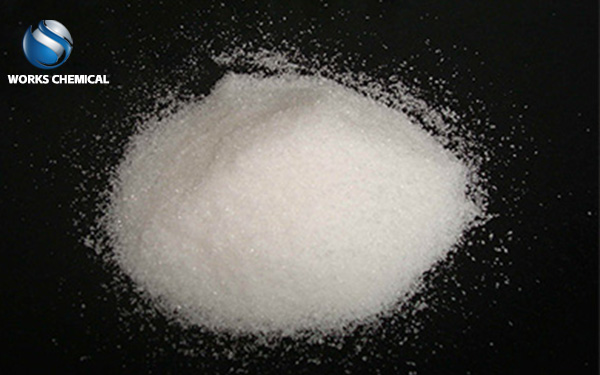
Sludge enhancers have demonstrated significant advantages in terms of technical principles, treatment effects and economy, and have the feasibility to replace traditional dewatering agents. The following analysis is conducted from four dimensions: mechanism of action, effect comparison, practical application and environmental benefits:

I. Mechanism of Action: Multi-target synergy to solve the dehydration problem
The limitations of traditional dehydration agents
Single action path: Traditional agents (such as PAC, PAM) mainly achieve sludge particle aggregation through charge neutralization or adsorption bridging, but they are difficult to destroy the highly hydrated extracellular polymers (EPS) in the sludge, resulting in incomplete release of bound water.
Equipment corrosion risk: Although alkaline agents such as lime can destroy colloids in a strong alkaline environment, they will corrode equipment, clog filter cloths, and release ammonia gas, causing secondary pollution.
Innovative breakthroughs in sludge enhancers
Charge neutralization and adsorption bridging: Rapid formation of large particle flocs;
EPS decomposition: Biological enzymes or oxidants destroy the structure of EPS and release bound water.
Surface modification: Reduce the solid surface load of sludge, decrease hydrophilic groups, and enhance dewatering performance.
Compound formula design: Combining inorganic flocculants (such as PAC), organic polymers (such as CPAM), surface modifiers and biological enzymes to achieve multi-target effects:
Lime-free formula: Prevents equipment corrosion, reduces filter cloth scaling, and extends equipment service life.
Ii. Effect Comparison: Moisture content is reduced by 35%-55%, and efficiency is increased by 100%-500%
The moisture content has decreased significantly
This product, sludge enhancer, achieves deep dewatering through the synergistic effect of multiple components, making the sludge cake more loose and breathable, which is convenient for subsequent incineration or brick-making.
The moisture content of the sludge cake after traditional chemical treatment is usually around 80%, while the sludge enhancer can reduce the moisture content to 35%-55%.
The processing efficiency has been significantly enhanced
Shortened conditioning time: Traditional agents require more than one hour, while sludge enhancers only need half an hour.
Improved filtration efficiency: When used in conjunction with plate and frame filter presses, the sludge pressing efficiency is increased by 100% to 500%, and the sludge pressing cycle is significantly shortened.
Optimization of drug dosage and cost
The dosage of traditional chemicals often exceeds 200 kilograms per ton of dry sludge, while the sludge enhancer only requires 4 kilograms per ton, reducing the cost of chemicals and the environmental risks associated with excessive dosage.
Iii. Practical Application: Verified in multiple scenarios, with significant economic benefits
Municipal sludge treatment
Case of sewage treatment plant: After being treated with the municipal sludge enhancer, the moisture content was significantly reduced, the treatment cost dropped, and there was no need to add lime, thus avoiding equipment corrosion.
Industrial sludge treatment
Case of battery materials factory: Customized high-pressure plate and frame filters combined with sludge enhancers have increased the recovery rates of cobalt and lithium to 95%, achieving resource utilization.
Papermaking sludge reuse
The sludge enhancer promotes the recovery of fine fibers. The amount of dry sludge from each ton of recycled paper exceeds 150 kilograms, turning waste into treasure and alleviating environmental protection pressure.
Iv. Environmental Benefits: Low-carbon and environmentally friendly, contributing to sustainable development Reduce secondary pollution
Traditional lime conditioning leads to a sludge pH value greater than 12, releasing ammonia gas. The sludge enhancer has no chloride ion residue, avoiding the impact of filtrate treatment on the biochemical system.
Promote the utilization of resources
After deep dewatering, the calorific value of the mud cake increases, which is convenient for incineration for power generation. An increase in the proportion of organic matter is conducive to rural greening projects such as composting.
In line with the trend of environmental protection policies
Under the "dual carbon" goals, the low-consumption, high-efficiency and environmentally friendly characteristics of sludge enhancers meet the demands of the industry's green transformation.
Conclusion: The replacement of traditional chemicals by sludge enhancers is an inevitable choice for technological upgrading
Sludge enhancers have the ability to comprehensively replace traditional dewatering agents through multi-target action mechanisms, significant improvement in treatment effects, extensive application scenario verification, and outstanding environmental benefits. It not only addresses the pain points of traditional chemicals such as high moisture content, low efficiency and strong corrosiveness, but also promotes the advancement of sludge treatment towards resource utilization and harmless treatment, representing a technological innovation direction in the field of sludge dewatering.